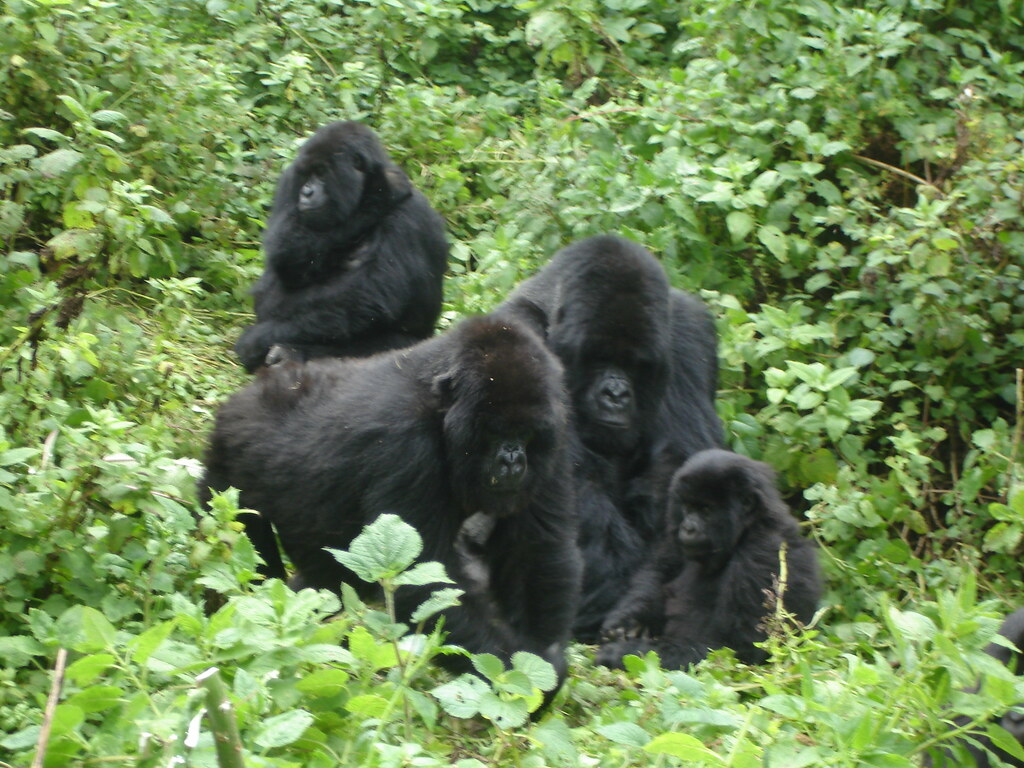Is Gorilla Trekking Safe in Uganda?
Gorilla trekking in Uganda is one of the most awe-inspiring wildlife adventures on Earth — a rare opportunity to come face-to-face with the endangered mountain gorillas in their natural rainforest habitat. Understandably, first-time visitors often wonder whether gorilla trekking is truly safe. The answer is yes — gorilla trekking in Uganda is considered very safe and well-regulated, thanks to strict conservation policies, professional guides, and the country’s long-standing commitment to eco-tourism and visitor security.
From the moment you step into Bwindi Impenetrable National Park or Mgahinga Gorilla National Park, every part of your trek is carefully managed to ensure both your safety and the well-being of the gorillas.
Uganda’s Excellent Gorilla Trekking Safety Record
Uganda has been offering gorilla trekking for more than 30 years, with no major safety incidents involving visitors. The Uganda Wildlife Authority (UWA) manages the parks and employs armed, highly trained ranger guides who accompany every group into the forest.
Each gorilla family visited by tourists is fully habituated, meaning they are accustomed to human presence after years of careful monitoring and gradual exposure. This process ensures the gorillas remain calm and non-aggressive during visits, while still behaving naturally in their environment.
Trekkers are always guided by a team that includes:
-
Experienced rangers and trackers who locate the gorillas in advance.
-
Armed escorts to ensure protection from any potential threats in the forest (these are precautionary and rarely needed).
-
Local guides and porters trained in first aid, wildlife behavior, and safety protocols.
Park Regulations That Keep You Safe
The safety of both visitors and gorillas is governed by strict rules set by the Uganda Wildlife Authority. These regulations are enforced before, during, and after each trek to minimize risks and protect wildlife:
-
A maximum of 8 visitors is allowed per gorilla group per day.
-
Trekkers must maintain a distance of at least 7–10 meters from the gorillas.
-
No flash photography or sudden movements are permitted.
-
If you’re ill (flu, cold, or fever), you are not allowed to trek, to prevent disease transmission to the gorillas.
-
Rangers provide pre-trek briefings outlining safety instructions and how to behave if gorillas approach.
These guidelines ensure a safe, respectful, and sustainable experience for everyone involved.
Gorilla Behavior – Gentle Giants of the Forest
Mountain gorillas are incredibly gentle by nature. Despite their immense strength, they are non-aggressive and show remarkable tolerance toward humans when approached properly. During treks, gorillas may curiously glance at visitors or go about their daily routines — feeding, grooming, or playing — completely at ease.
Your guide will interpret their behaviors and ensure that you maintain a safe and respectful distance. Aggressive displays are extremely rare and are handled calmly and professionally by experienced rangers who understand the gorillas’ social signals.
Security and Political Stability in Gorilla Regions
Uganda’s gorilla trekking destinations — particularly Bwindi Impenetrable National Park and Mgahinga Gorilla National Park — are located in the southwestern part of the country, near the borders with Rwanda and the Democratic Republic of Congo. These areas are politically stable, secure, and under constant surveillance by both park authorities and local law enforcement.
The government of Uganda takes tourism security very seriously, recognizing gorilla trekking as one of the country’s top tourism assets. Access roads to the parks are patrolled, lodges and tour operators maintain close communication with authorities, and visitors are accompanied at all times during activities.
Health and Trekking Safety
The trek itself is safe, but it can be physically demanding due to steep terrain and dense vegetation. Trails can be slippery, especially after rainfall. Visitors are encouraged to wear good hiking boots, long trousers, and gloves for better grip. Hiring a porter not only helps carry your gear but also provides extra stability on challenging paths.
Altitude sickness is rare, as Bwindi’s elevations range between 1,160 and 2,600 meters. Most treks last between 2 and 6 hours, depending on the location of the gorilla family being tracked.
Supportive Local Communities
Part of what makes gorilla trekking in Uganda safe and special is the involvement of local communities. Through programs such as the Revenue Sharing Scheme, a portion of every gorilla permit fee goes directly to surrounding villages. This promotes harmony, discourages poaching, and fosters local pride in conservation.
As a result, community members actively support tourism activities, helping ensure that the region remains safe and welcoming for visitors.
Emergency and Medical Preparedness
In the unlikely event of a medical emergency, park authorities are well-prepared. Rangers carry first-aid kits, and evacuation procedures are in place for serious cases. Some lodges and trekking stations are equipped with radios for rapid communication with nearby hospitals.
Tour operators also maintain contingency plans, including emergency air evacuation coverage for travelers in remote areas — another reason why booking your trek through a reputable company is essential.
Final Thoughts – Safe, Structured, and Unforgettable
Gorilla trekking in Uganda is not just safe — it is one of the most professionally managed and rewarding wildlife experiences in Africa. Every element of the trek, from security to health precautions, is designed to protect both travelers and these gentle giants of the forest.
Whether you’re trekking in the misty trails of Bwindi Impenetrable National Park or the scenic volcanic slopes of Mgahinga, you’ll find yourself guided by experts who prioritize safety above all else. The result is a deeply moving encounter that connects you to nature in a way few other adventures can.
In short, yes — gorilla trekking in Uganda is safe. It’s a journey that’s not only secure and well-organized but also life-changing, offering a glimpse into one of the world’s most inspiring conservation success stories.





